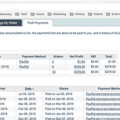MBA: These 5 factors will fuel the future of multifamily, commercial real estate
Multifamily and commercial real estate have had a great year in 2019, and its only expected to get better in 2020 and beyond.
Commercial and multifamily originations rose 24% in the third quarter this year from the third quarter of 2018 and 9% from the second quarter , a survey from the Mortgage Bankers Association showed.
And multifamily originations are set to hit yet another all-time high in 2020.
“There’s been a lot of attention paid to what might be ahead for commercial real estate and commercial real estate finance markets, given the uncertainty in the global economy,” said Jamie Woodwell, MBA vice president of commercial real estate research.
“Throughout the industry, borrowers, lenders and others are working through whether to take today’s market as it is, or to plan for interest rates, property values and loan performance that may be markedly different,” Woodwell said.
Here are five factors the MBA said to watch for in 2020 that will fuel the future of commercial and multifamily real estate:
1. Job growth – Years of steady job growth have been a boon to the office market, helping to offset the drag of tenants being more efficient with their use of space. Job gains should remain positive in the coming years, albeit at a slower pace, with the demand for office space following that same trend.
2. Rising household formation – Demographic shifts in America will have a significant impact on the overall demand for housing, goods and services, as well as the ways those products are purchased and consumed.
3. The health of the consumer – Household balance sheets – in the aggregate – remain healthy, with financial obligations and debt service payments at record low levels. Consumers are in good shape for any potential economic downturn, but changes in consumer sentiment would likely influence the economy and demand for commercial space.
4. Low interest rates – Long-term U.S. interest rates are at some of the lowest levels on record, and internationally, some central banks have resorted to negative interest rates. “Lower for longer,” remains the most likely path for interest rates, but commercial real estate investors and lenders will have to contend with where rates are today, with where they might go in coming years.
5. The search for yield – Property prices are growing more quickly in secondary and tertiary markets, and investors are increasingly turning to transitional properties in search of higher returns. Perhaps the clearest example of this search for yield is in the CMBS market. In recent years, the credit curve for CMBS bonds has been falling and flattening — meaning investors are willing to take on more risk in a search for yield.
“No one has the answers to these questions, but the market’s focus on them is changing the complexion of what is being done and how different players are acting,” Woodwell concluded.






